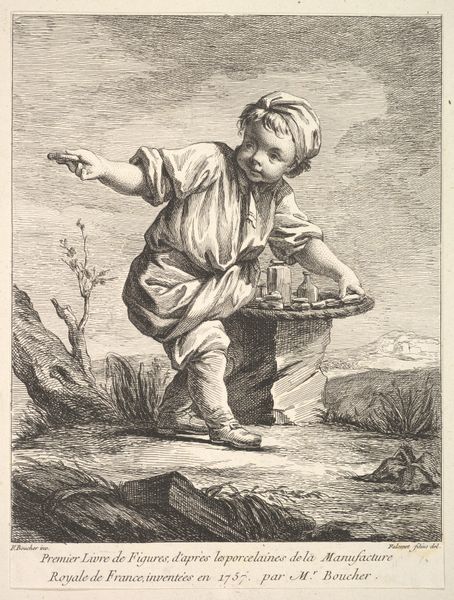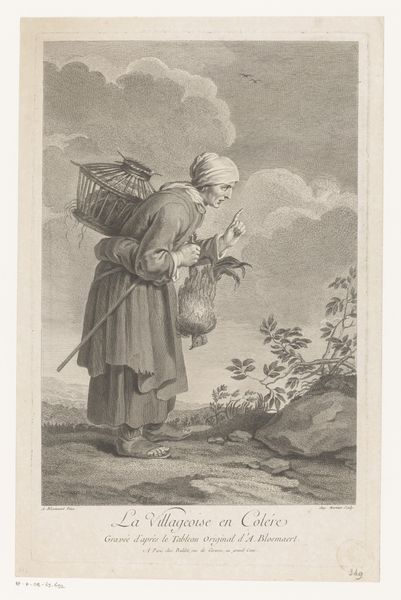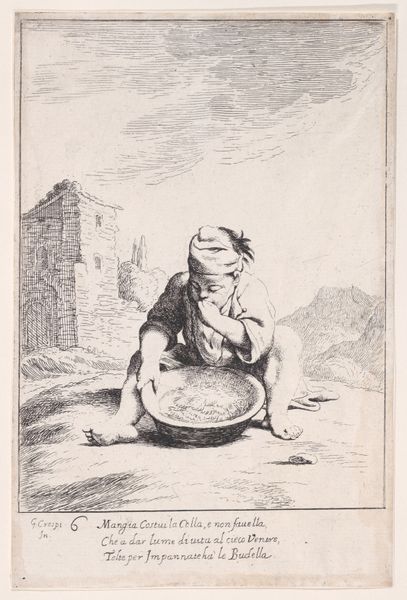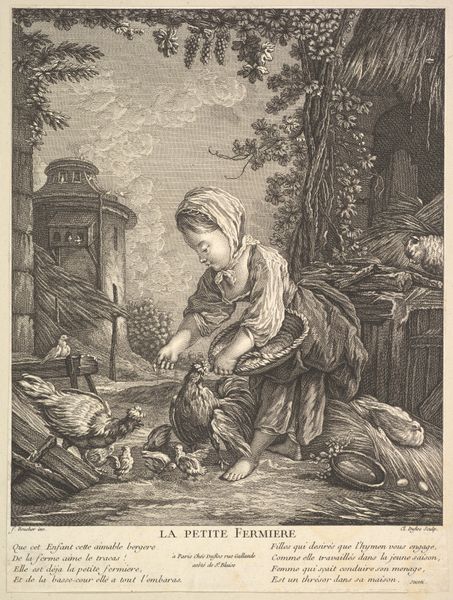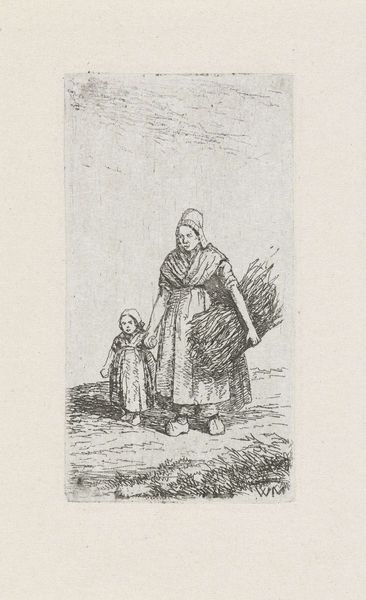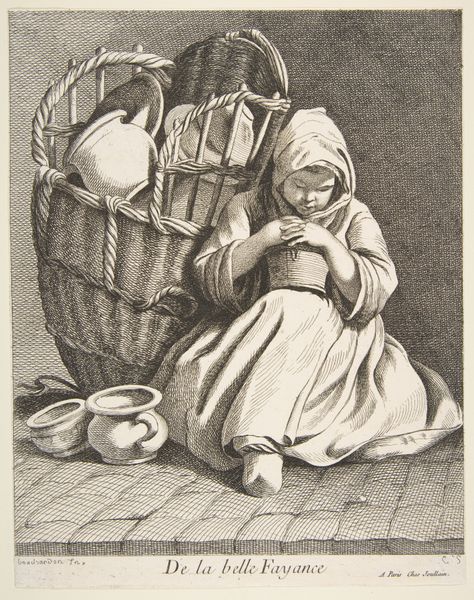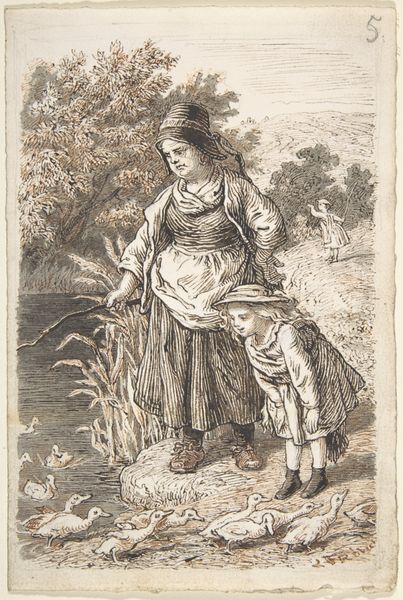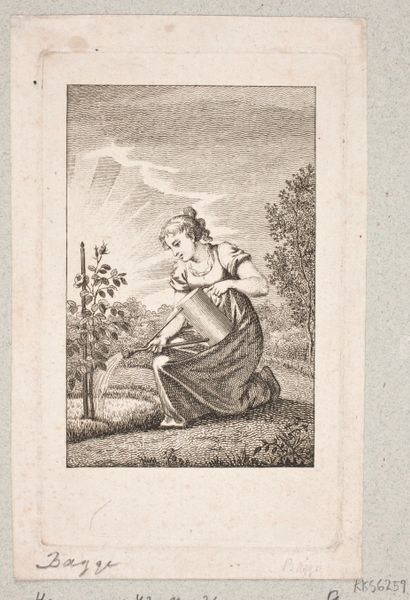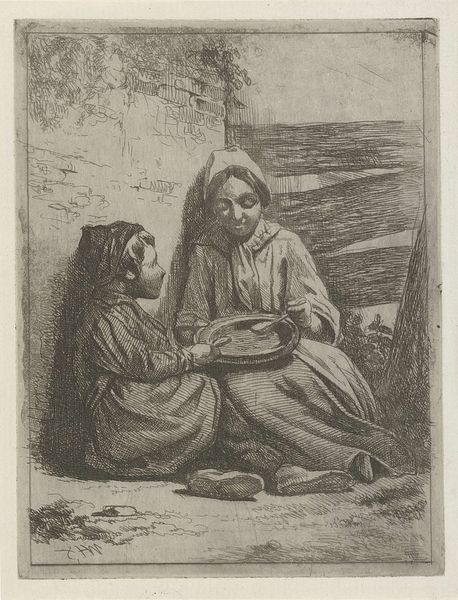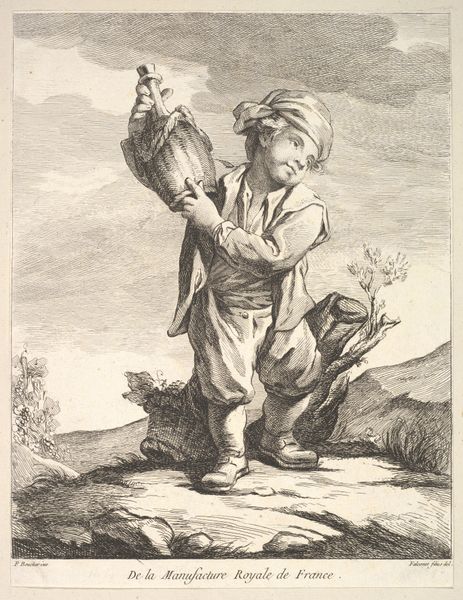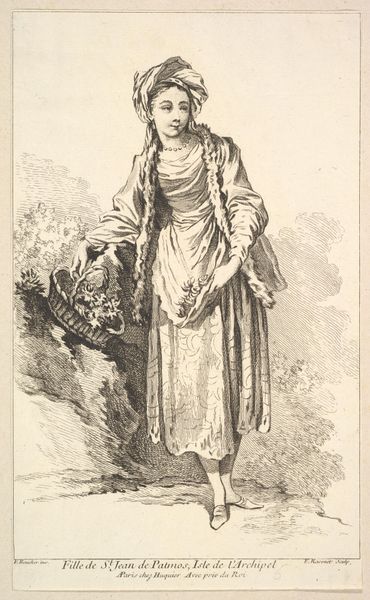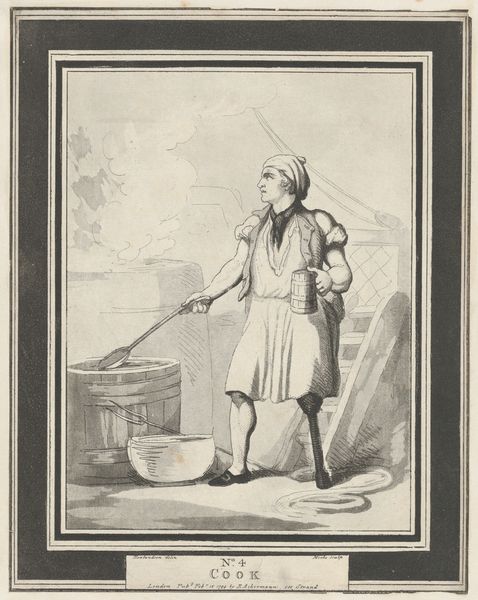
Little girl with a vessel by her feet, from Premier Livre de Figures d'après les porcelaines de la Manufacture Royale de France, inventées en 1757, par Mr. Boucher (First Book of Figures after porcelains from the Manufacture Royale de France, devised in 1757, by Mr. Boucher) 1757
0:00
0:00
drawing, print, etching
#
portrait
#
drawing
# print
#
etching
#
figuration
#
history-painting
#
rococo
Dimensions: Sheet: 9 5/8 x 7 1/4 in. (24.5 x 18.4 cm)
Copyright: Public Domain
Curator: Let’s take a closer look at this etching titled "Little Girl with a Vessel by Her Feet," part of the "Premier Livre de Figures" and based on designs for the Royal Porcelain Factory in 1757. Pierre Etienne Falconet made this after an idea by Boucher. What are your initial thoughts? Editor: She’s got this heavy-lidded, almost melancholic gaze. Doesn’t strike me as frivolous Rococo, actually. More… serious than I’d expect from a porcelain design. It makes you wonder what that little girl's life was like. Curator: Precisely. The print series this comes from was intended to elevate the status of French porcelain design. By drawing upon Boucher's compositions, which were themselves often referencing pastoral themes popular with the aristocracy, they created items intended to decorate upper-class homes, imbuing them with sophisticated symbolism. Editor: Right, the kind of “let them eat cake” vibe? Although… even the cake plates were beautiful then, I have to admit! The landscape feels windswept, with those dramatic clouds sketched in the background. Like a tiny tragedy unfolding. What was porcelain-mania all about anyway? Curator: Porcelain represented wealth and refinement; owning it, displaying it, it all broadcast your good taste and privileged access to global trade and courtly fashion. These designs reinforced that association. Editor: Ah, so a girl from the Royal Factory equals status? She feels grounded though. With the metal milk can... practical. Curator: Well, Falconet here translates Boucher's initial vision in etching form, adding another layer of translation between the original model, and the desired end object, and of course he is working in dialogue with a print market that appreciated the picturesque in both high and low subject matter. Editor: Okay, makes me think... how many layers of "authentic" peasant life were presented here, right? How “real” can a scene be when it's being etched onto porcelain and printed for a very exclusive circle of society? I guess there is as much artificiality on a simple vessel as in an history painting. Curator: The consumption of imagery was tightly bound up with production of material. As you note, these works are staged, filtered, crafted with a particular audience in mind. Editor: A world built on illusions—gorgeous, elaborate illusions! That heavy milk can has its place in the story nonetheless, a visual key that maybe unlocks everything... Curator: An appropriate place to leave off I think; a question about meaning to keep us all thinking, indeed.
Comments
No comments
Be the first to comment and join the conversation on the ultimate creative platform.
